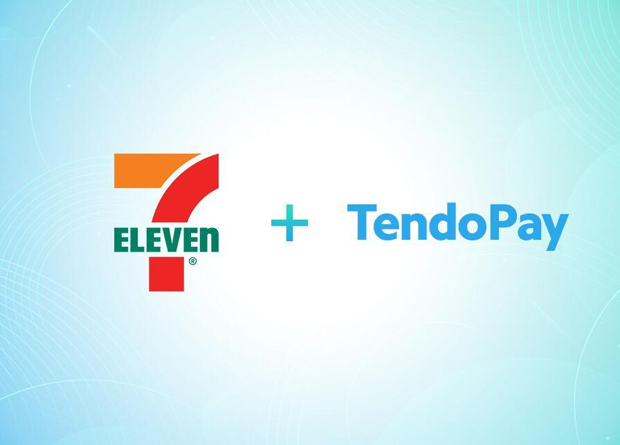 By James Dantow, VP for Worldwide Support and GM for the Philippines, NetSuite
By James Dantow, VP for Worldwide Support and GM for the Philippines, NetSuite
E-commerce has become a big business in Southeast Asia, reporting over US $500 million investment in 2013. The Philippines is no exception. In fact, the country is included among the Top 10 Highest Growing Countries in e-commerce, according to Digital Filipino.
This only means that it is vital to stay one step ahead of your competitors with a fresh, innovative, and engaging e-commerce presence because managing your e-commerce site is not just an annual project—it’s a daily challenge. Retailers need to take a closer look at their websites to make sure that they are equipped with the latest features and functionality to meet the expectations of a very tech-savvy customer.
Below are 10 capabilities your e-commerce site must be able to do:
1. A Fully Mobile Shopping Experience: Some merchants have been skating by for years with mobile sites which offer stripped-down capabilities and an unsatisfying “View Full Site” escape hatch for advanced tasks. Mobile’s increasing market share means that this practice must end. While mobile buyers may have different buying patterns than desktop shoppers, they won’t tolerate a dumbed-down user experience. Instead, merchants must find mobile-friendly ways to offer the complete customer experience, from wish list management to returns.
2. Encouraging Product Reviews: Curating outside reviews as well as offering buyers a chance to showcase opinions on their purchases is vitally important to build your reputation as a retailer dedicated to providing customers with outstanding value and the best products for their needs and interests. Consumers are much more willing to purchase your products when they have been reviewed by past consumers.
3. Expert Commentary and Videos: Empower your buyers with trusted, authoritative voices and hands-on guides to help them make the most of their purchases. Far more than a superficial “celebrity endorsement,” bringing the commentary of a known expert to your product pages bolsters shopper’s confidence in their purchase and raises the profile of your store. Using high-resolution video is also a great way to attract shoppers to your site to learn more about your products. Videos that guide customers through everything from unboxing to making the most of their new products can help them envision how their lives will be improved with your products.
4. Faceted, Typo-Sensitive Search: Customers need more power and flexibility in their search tool. Faceted search brings more detail to the process, which in turn makes it easier for customers to zero in on the products they are most likely to buy. Making faceted search work requires cataloguing which product attributes are most important to your customers. Keep in mind that some of those characteristics are not necessarily features of the product itself, but metadata surrounding it. For example, a powerful faceted search task would be “headphones with an average rating of four out of five stars.” And while you tinker with search, make sure the search parser is forgiving of typos and selects the closest, most likely match rather than returning zero results.
5. Curated Bundles and Collections: Powerful searches should be paired with competent, customer-friendly merchandising. As online buyers have more and more choices in products and services, the importance of guiding customers with appealing bundles and collections continues to grow. Skilled merchandisers are still the customer’s ally, as many shoppers want to know about what’s new, hot, and different—not about every single product in the warehouse.
6. Omnichannel Visibility: E-commerce isn’t just about stock on-hand in the “web inventory” any longer. Customers demand real-time visibility into your inventory levels online as well as in-store. They want to know how many units you have on the shelves, and what the quickest way to obtain them will be. They want in-stock alerts for out-of-stock items (again, both online and in-store). In short, if you have the product anywhere at all, your customers want to know about it so they can make friction-free purchases through any channel. That’s the new omnichannel model. It means more than just an e-commerce redesign, but the online component is a crucial first step.
7. Enhanced Image Zoom: Blocking pop-up windows has been standard practice for savvy shoppers for decades, yet many merchants still rely on pop-ups or Flash scripts when shoppers want a closer look at merchandise. A good example of strong execution is providing a clean, high-resolution full-screen zoom which does not jar the viewer out of the shopping experience and keeps a large “Add to Cart” button even in the zoomed image view.
8. Product Comparisons: Whether you sell shoes or mutual funds, customers want to conduct their own comparisons and “bake-offs.” A few manufacturer-supplied competitive tables are not enough. Shoppers need to be able to create side-by-side comparisons of the features, specifications, costs, benefits and reviews on every category of merchandise. Making it easier for them to build these comparisons keeps them engaged with your store, rather than risking losing them to a seller with better competitive intelligence. It’s also a great way to up-sell by showing advantages of products over one another.
9. Single Sign-on and Guest Transactions: Forcing customers to slow down and create accounts was meant to improve loyalty, but it creates an unnecessary burden on customers who are ready to buy now. Retailers with multiple brands should honor a single sign-in across their entire web presence. Better still, allow guest transactions with no need to create a password and authenticate account registration.
10. Social Integration: When your customers discuss you and your products, you cannot afford to be left out of that conversation. Social integration now is about more than simply hitting “Like” on a product page. Retailers can pair experts with first-time buyers, join discussions, promote innovative uses of a particular product to communities of interest, and conduct transactions from purchase to return over social media channels. Interacting with your customers in the channels they prefer most is vital, and your shoppers may not want to leave the comfortable environment of their Twitter and Facebook feeds. Rather than fighting it, work to integrate your shopping experience with the social channels they prefer.
These tips present just a few opportunities to help retailers adapt to the constantly-evolving expectations of today’s online consumer. Some might be quick fixes, others longer-term projects, but identify which of these steps will make the most difference for your business and get started.
















































































































